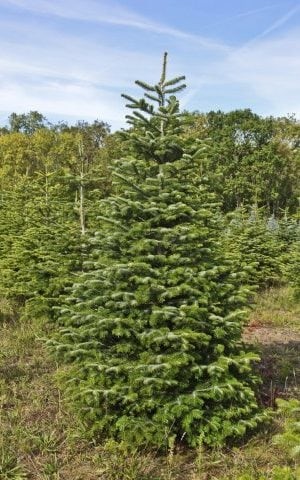Christmas Tree Buying
Order your Christmas Tree here
The traditional cut Christmas Tree in Britain has been the Norway spruce for many years (Picea Abies), which has short, bright green, pointed needles that drop quickly. In recent years, however, sales of “non-drop” varieties, such as the conical Nordman fir (Abies nordmanniana); and Blue Spruce (Picea pungens), with glaucous or silver-blue foliage, have overtaken the Norway spruce.
Provided care is taken in looking after the tree it should survive over four weeks.
Here's our guide to buying your tree;
1. Norway Spruce

Spiky: Norway Spruce Christmas Tree Credit: Andrew Crowley
This is the traditional British Christmas tree which has been popular since Victorian times. The bright green Norway Spruce has a lovely scent but quickly drops its dense, spiky needles, so if you're keen on this variety, wait until later in December and make sure you water it regularly.
2. Nordmann Fir

Nordmann fir Christmas Tree Credit: British Christmas Tree Growers Association
Increasingly popular in Britain, the Nordmann fir is now Britain's biggest selling Christmas tree. It's slightly more expensive than a Norway spruce and has little fragrance however, it crucially retains its needles for longer. The trees, which were originally found in south Russia, have a reliably symmetrical shape and dark green broad needles. The foliage is soft and glossy, which make it child-friendly
3. Blue spruce
Striking: Blue Spruce Christmas Tree Credit: Andrew Crowley
The needles of this tree have a lovely silver-blue colour, though they are rather prickly. The tree holds its needles well and they generally have a good symmetrical form.
Order your Christmas Tree here

